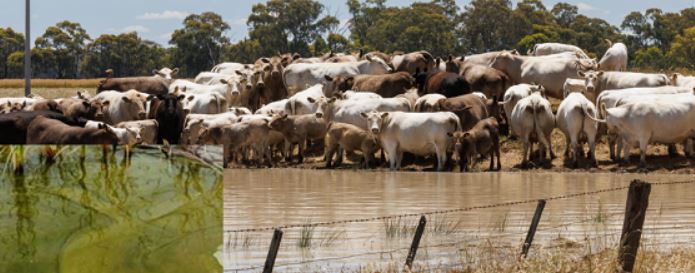February 27th, 2024Blue-green algae increased risk to animals and people

Recent flooding combined with warmer weather has increased the risk of blue-green algal blooms in farm dams, Agriculture Victoria is warning.
The department is urging livestock owners in particular to recognise the signs – blooms typically appear as surface scum that looks like a suspension of green paint, often with an earthy smell.
If a suspicious bloom is noticed, stock should be removed as quickly as possible, and a safe alternative water supply provided
Blue-green algae, also known scientifically as Cyanobacteria, are a group of photosynthetic bacteria. These accumulations are frequently referred to as ‘blooms’.
Blooms are most often blue-green in colour but can also be:
- blue
- green
- reddish-purple
- brown.
Blue-green algae blooms are likely to occur more often when the water is warm and enriched with nutrients like phosphorus or nitrogen. Under certain conditions, blue-green algae can accumulate in thick layers at the surface or water’s edge.
Blue-green algae can cause poisoning and serious illness in livestock or pet animals, and people may also be exposed to these toxins:
- through contact with the skin (for example, when swimming)
- through inhalation of water containing toxins (for example, when close to irrigation sprays, motor boating or water skiing)
- by swallowing contaminated water, or
- by eating fruit, vegetables or leaves with blue-green algae surface contamination.
It’s possible for blue-green algae to cause illness in humans. The symptoms in humans include:
- rashes
- headaches
- fevers
- gastroenteritis
- seizures
- respiratory failure









